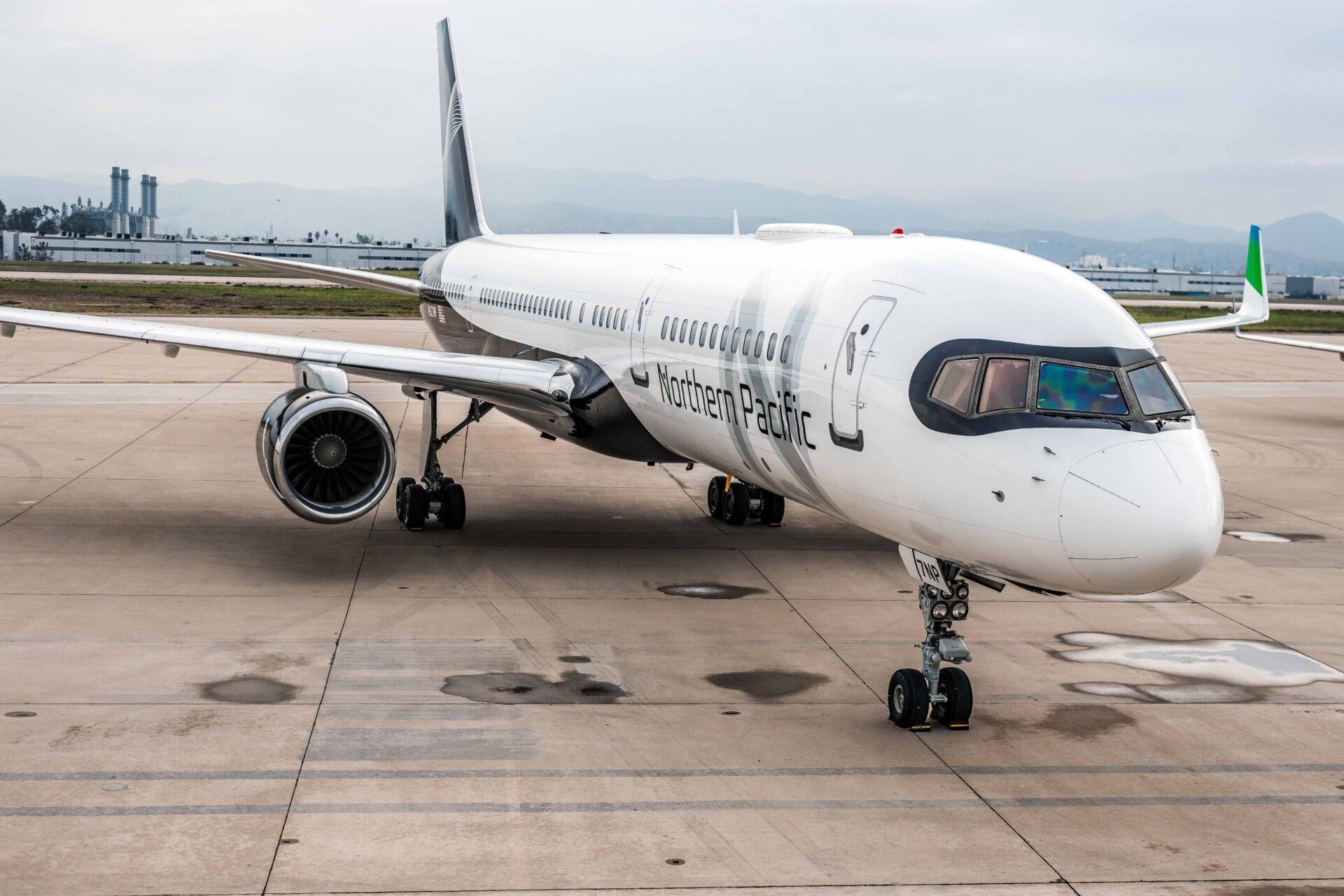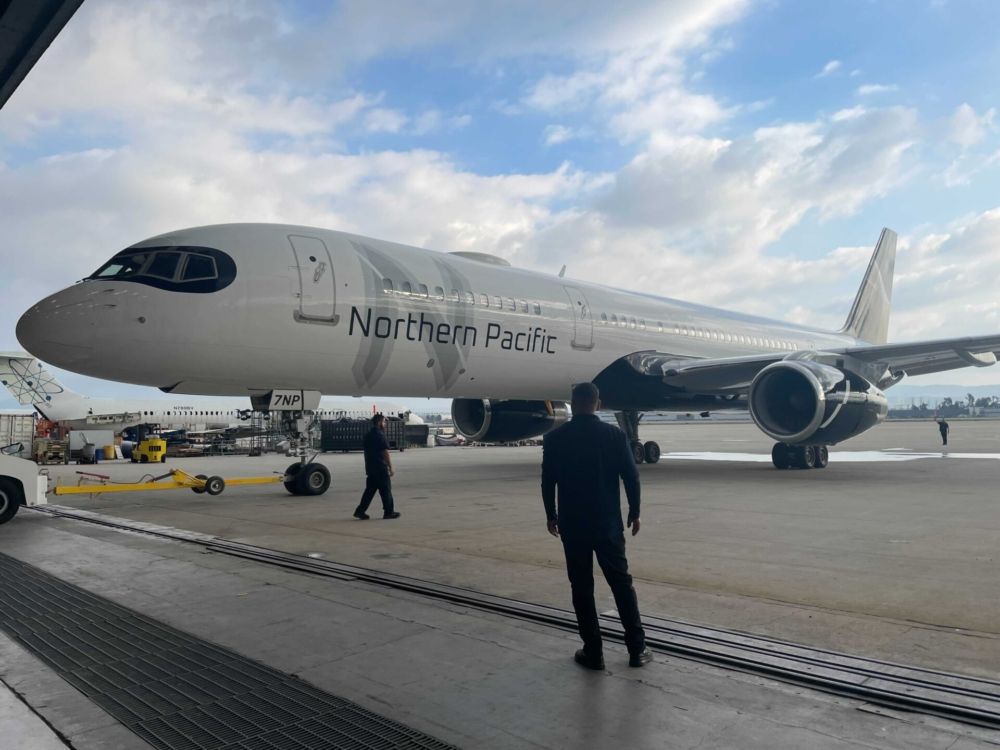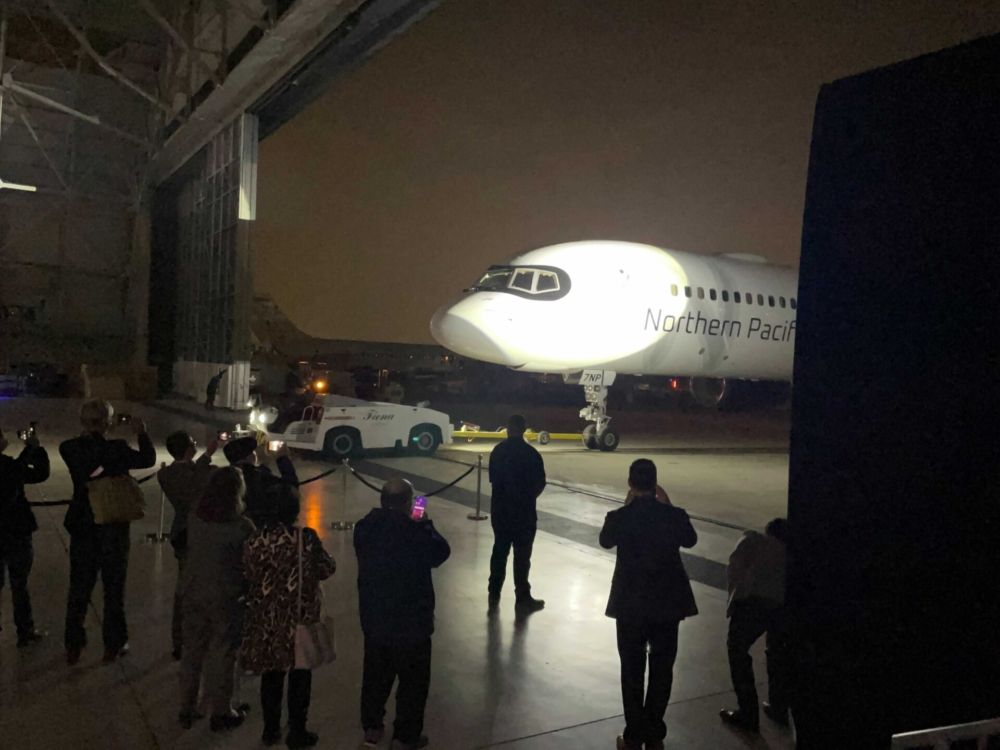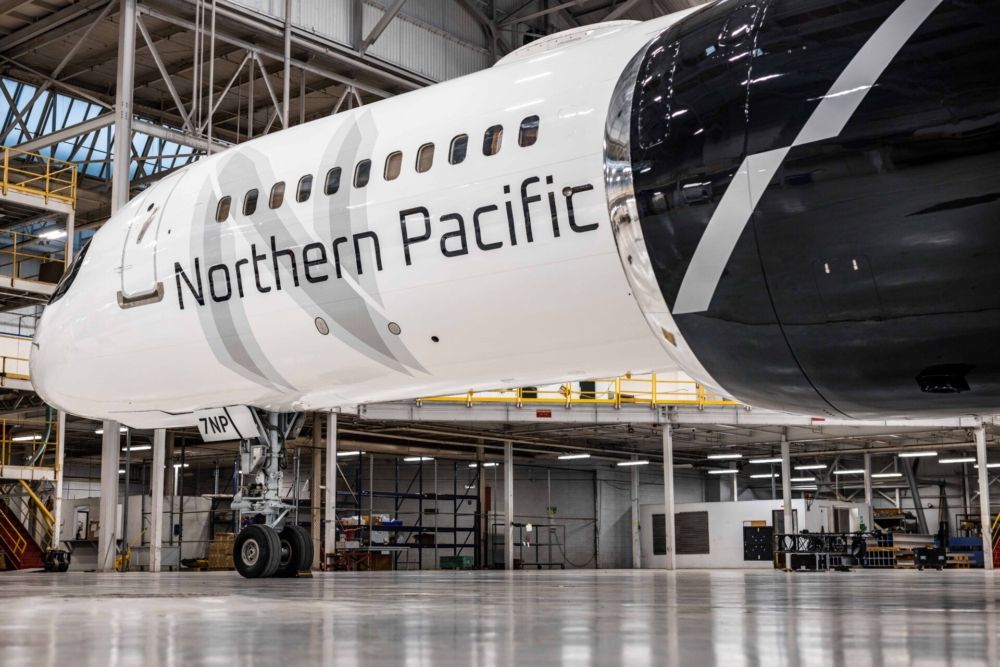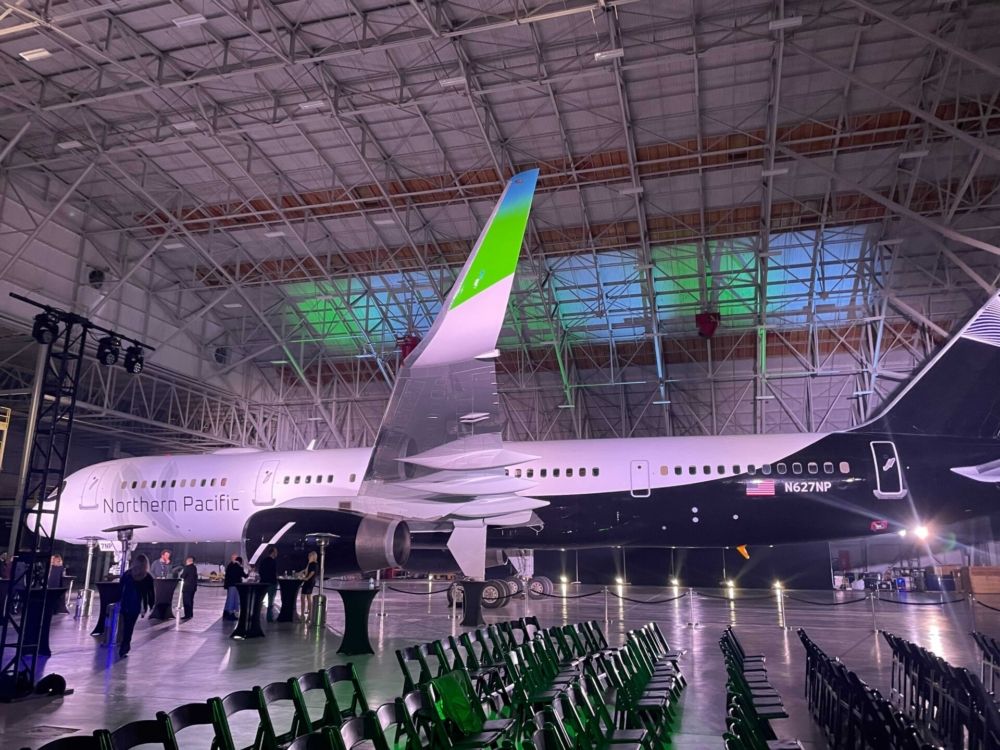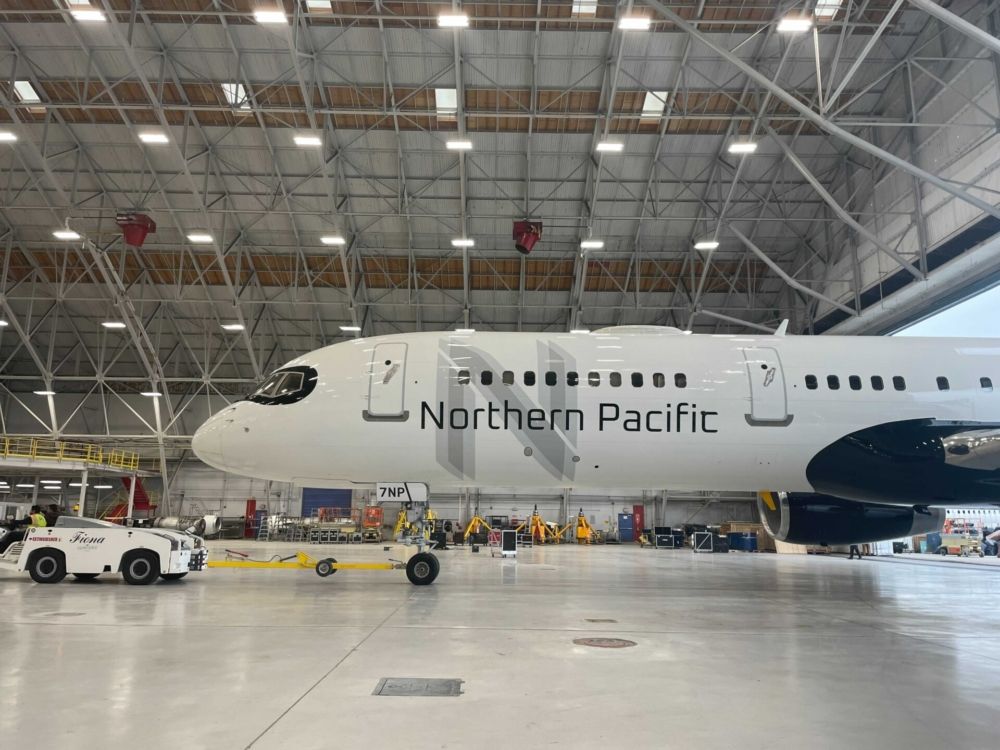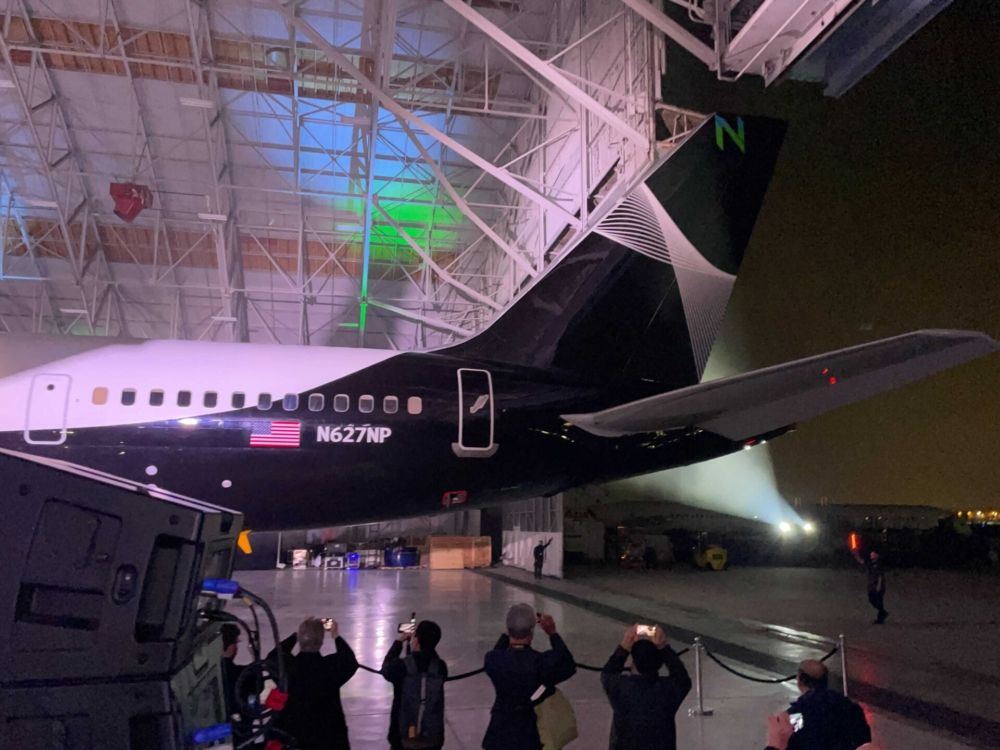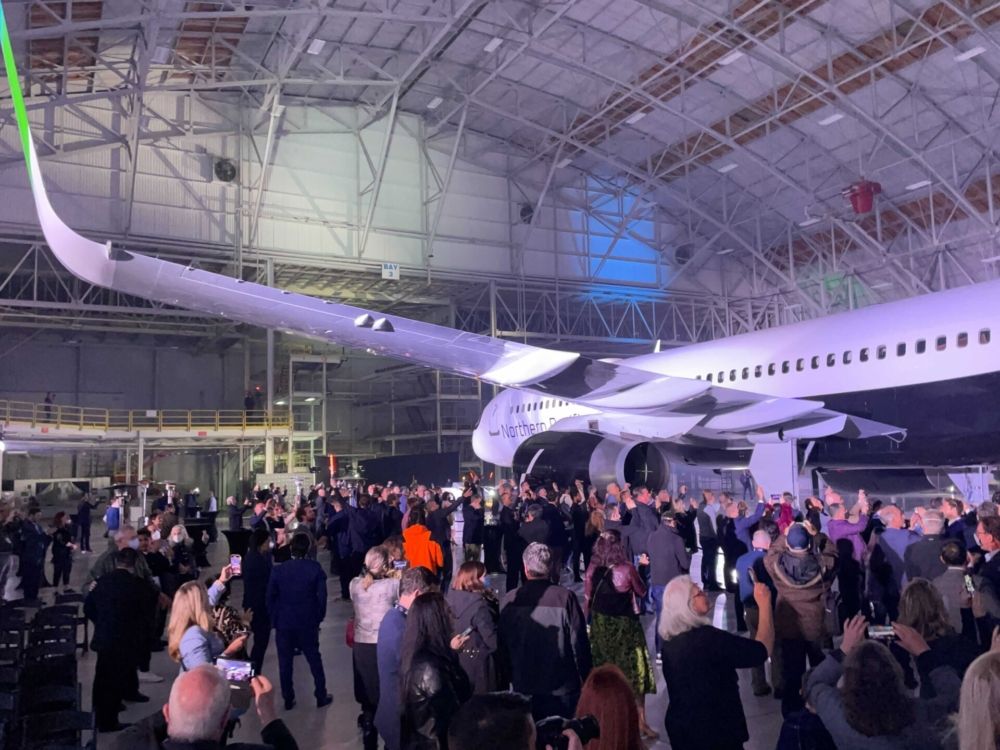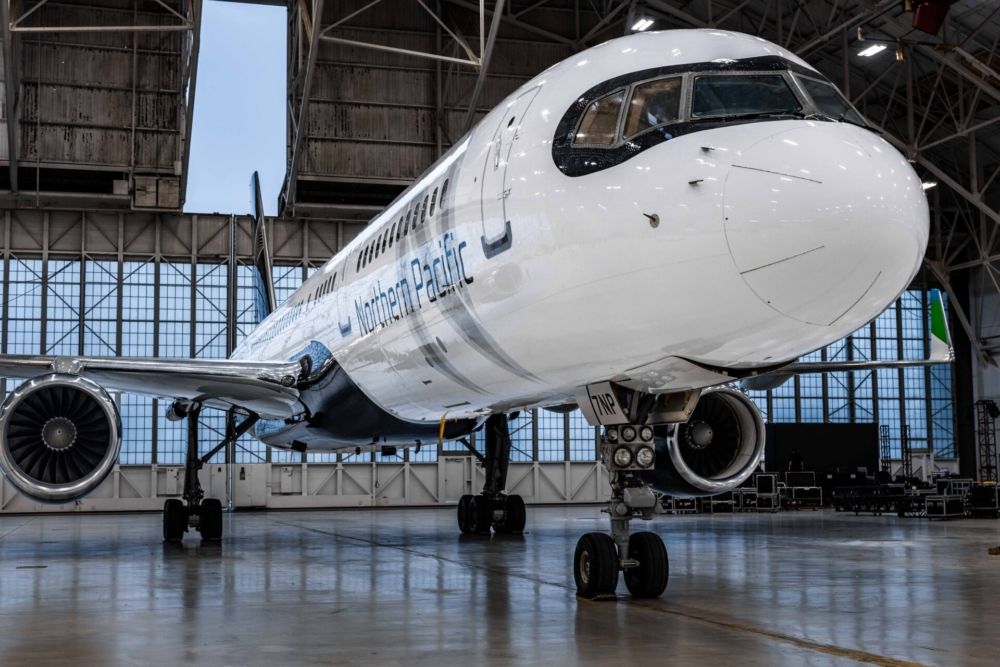Alaska-based startup Northern Pacific Airways has revealed its first Boeing 757-200 bearing its striking livery. The aircraft, which is not yet in passenger service, is the start of the airline's mission to be a new airline connecting people to Alaska and between the United States and Asia.
Northern Pacific reveals its first Boeing 757
At an event in San Bernardino, California, Northern Pacific has revealed its first Boeing 757-200. The aircraft, registered as N627NP, is the first aircraft in the airline's fleet and is the first to be revealed with the airline's distinctive livery. The new livery was showcased for the first time at the Certified Aviation Services LLC (CAS) hangar. CAS is responsible for painting the Boeing 757 featured in the unveiling.
Rob McKinney, CEO of Northern Pacific, stated the following on the reveal:
"The livery design captures the Northern Pacific brand and our affection for our Alaskan home. The design echoes our airline's values - elevated customer service, an esteemed point of view, and an innovative route strategy designed to connect passenger from east to west."
The livery
Northern Pacific states that the livery is designed to reflect the "natural beauty of the Alaskan wilderness." The primary color schemes used include black hues and gray tones that symbolize the mountainous terrain, ice, and snow that many travelers associate with Alaska.
There are a few bold elements on the aircraft. This includes a black mask around the cockpit windows, a common feature on some modern planes. However, there are a few other notable elements. For example, the aircraft's winglets include pops of sharp turquoise, which reflects the Northern Lights that many people venture to Alaska to see.
Airlines typically spend a lot of time working on their livery. A visual impression to customers, the Northern Pacific aircraft stands out as something a little different, with a distinct "N" sitting right behind the "Northern Pacific" name on the fuselage.
Coming to more airplanes
Northern Pacific expects to continue growing its fleet with Boeing 757-200 aircraft. Given the host of retirements of the type from other airlines, there are plenty out there that the airline scooped up and plans to use to create a new kind of way to get between the US and East Asia. It secured six Boeing 757-200s in September.
Northern Pacific is eyeing East Asian and US destinations from Ted Stevens International Airport (ANC) in Anchorage, Alaska. Some of its initial cities could include Tokyo, Osaka, and Seoul in Asia. In the US, the airline has noted on its website is looking at cities in New York, Florida, California, Texas, and Nevada.
Northern Pacific has not yet revealed its start date for operations or an official slew of routes. It has, however, already started recruiting staff to support its Alaska-based operations. It is still planning on focusing its operations around a connecting hub in Anchorage, moving people between the US and East Asia and bringing people to and from Alaska in a model similar to that of Icelandair, though being of the first airline to explicitly target this kind of model between the US and Asia.
When Northern pacific launches will depend on a host of factors. Starting up an airline takes a lot of work. The carrier is working behind the scenes on a host of different requirements to get started. This includes gaining access to space at major airports, securing maintenance facilities, creating an inflight service profile, receiving necessary regulatory approvals, and watching the overall demand environment before officially putting passengers on its planes.

